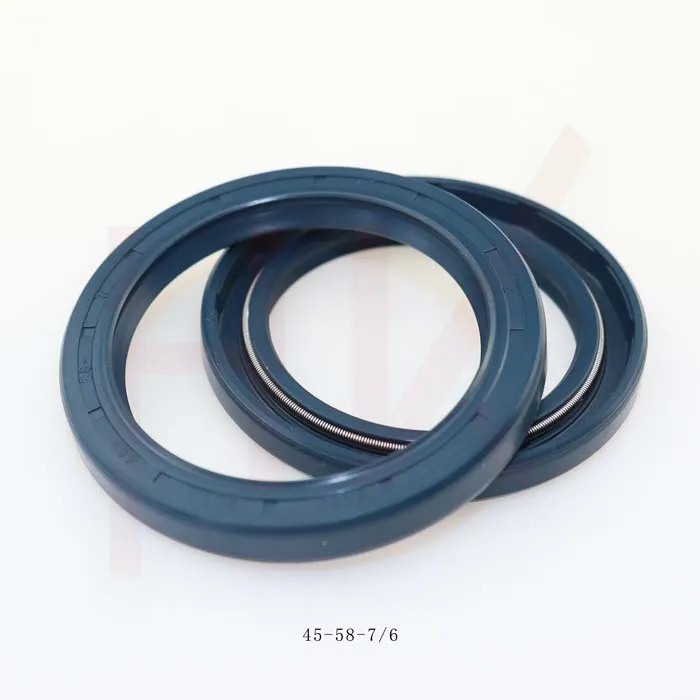Novemba . 17, 2024 19:17 Back to list
forklift hydraulic cylinder seals
Understanding Forklift Hydraulic Cylinder Seals
Forklifts are indispensable machines in various industries, facilitating the movement of heavy loads with ease and efficiency. A crucial component of a forklift's performance is its hydraulic system, specifically the hydraulic cylinders that aid in lifting and lowering operations. At the heart of these hydraulic cylinders are the seals that play a vital role in maintaining the system's functionality and reliability. In this article, we will explore the importance of hydraulic cylinder seals, the types available, common issues, and maintenance practices to ensure their longevity.
Importance of Hydraulic Cylinder Seals
Hydraulic cylinders convert hydraulic energy into mechanical energy, allowing forklifts to lift and move heavy loads effortlessly. Seals are essential in this process as they prevent hydraulic fluid from leaking out of the cylinder. This leakage can lead to a loss of pressure, ultimately reducing the efficiency and lifting capabilities of the forklift. Additionally, seals protect the internal components of the cylinder from dirt and debris, which could cause wear and tear over time.
A well-sealed hydraulic cylinder is essential for ensuring safe operation. If a seal fails, it can result in catastrophic malfunctions that may not only damage the forklift but also pose safety risks to operators and bystanders. Therefore, understanding the types of seals and maintaining them is of utmost importance in heavy machinery operations.
Types of Hydraulic Cylinder Seals
There are several types of seals used in hydraulic cylinders, each designed for specific functions and applications. The most common types include
1. Rod Seals These seals are located at the rod end of the cylinder and are responsible for preventing hydraulic fluid from leaking out as the rod extends and retracts. They must withstand high pressure and provide a low-friction surface to enable smooth movement.
2. Piston Seals Positioned within the cylinder, piston seals prevent fluid from leaking around the piston. They ensure that the hydraulic pressure is utilized effectively for lifting operations.
3. Buffer Seals Buffer seals are often used in conjunction with rod and piston seals to absorb shocks and protect the primary seals from high-pressure spikes.
4. Guide Rings While not seals in the traditional sense, guide rings are crucial in maintaining alignment and reducing wear on the seals, thereby enhancing their lifespan.
5. Scraper Seals These seals are used to prevent dirt and contaminants from entering the hydraulic cylinder, playing a vital role in prolonging the life of the internal components.
Common Issues with Hydraulic Cylinder Seals
Despite their importance, hydraulic cylinder seals can encounter various issues that may compromise their effectiveness. Common problems include
forklift hydraulic cylinder seals

- Wear and Tear Over time, seals can degrade due to continuous exposure to hydraulic fluid, pressure, and temperature variations, leading to leaks
.- Contamination Dirt, dust, and other contaminants can enter the hydraulic system if scraper seals malfunction, causing damage to the internal components and seals themselves.
- Improper Installation Incorrectly installed seals can lead to leaks and decreased efficiency, emphasizing the need for proper installation techniques.
- Chemical Compatibility Using seals made from materials incompatible with the hydraulic fluid can result in seal failure, highlighting the importance of selecting the right materials for specific applications.
Maintenance Practices
To ensure the longevity and efficiency of hydraulic cylinder seals, regular maintenance is essential. Here are several key practices
1. Regular Inspections Routine checks for signs of wear, contamination, and leaks can help identify potential issues before they lead to major failures.
2. Cleaning Keeping the hydraulic cylinder and surrounding areas clean can minimize the risk of contaminants entering the system.
3. Proper Lubrication Ensuring seals are adequately lubricated can reduce friction and wear, extending their lifespan.
4. Replacing Worn Seals Regularly replacing seals that show signs of wear is crucial to maintaining the hydraulic system's efficiency and safety.
5. Choosing Quality Parts Investing in high-quality seals made from appropriate materials for your specific hydraulic fluid can significantly enhance reliability.
Conclusion
Hydraulic cylinder seals are fundamental to the operation and longevity of forklifts. Understanding their importance, types, potential problems, and maintenance practices can significantly improve the reliability and safety of these essential machines. Proper care and attention to hydraulic cylinder seals not only enhance performance but can also result in cost savings through reduced downtime and repair expenses. As industries continue to evolve and expand, ensuring the optimal functioning of equipment like forklifts will remain a priority for businesses worldwide.
-
The Trans-formative Journey of Wheel Hub Oil Seals
NewsJun.06,2025
-
Graphene-Enhanced Oil Seals: Revolutionizing High-Pressure Oil Sealing
NewsJun.06,2025
-
Future of Hydraulic Sealing: Advanced Intelligent TCN Oil Seals
NewsJun.06,2025
-
Don’t Let a Broken TCV Oil Seal Ruin Your Day
NewsJun.06,2025
-
Bio-Inspired Dust Seals for Better Sealing Performance
NewsJun.06,2025
-
Biodegradable and Sustainable Hydraulic Seal Materials
NewsJun.06,2025
-
Top Oil Seal Solutions for Your Industrial Needs
NewsMay.22,2025
Products categories
















